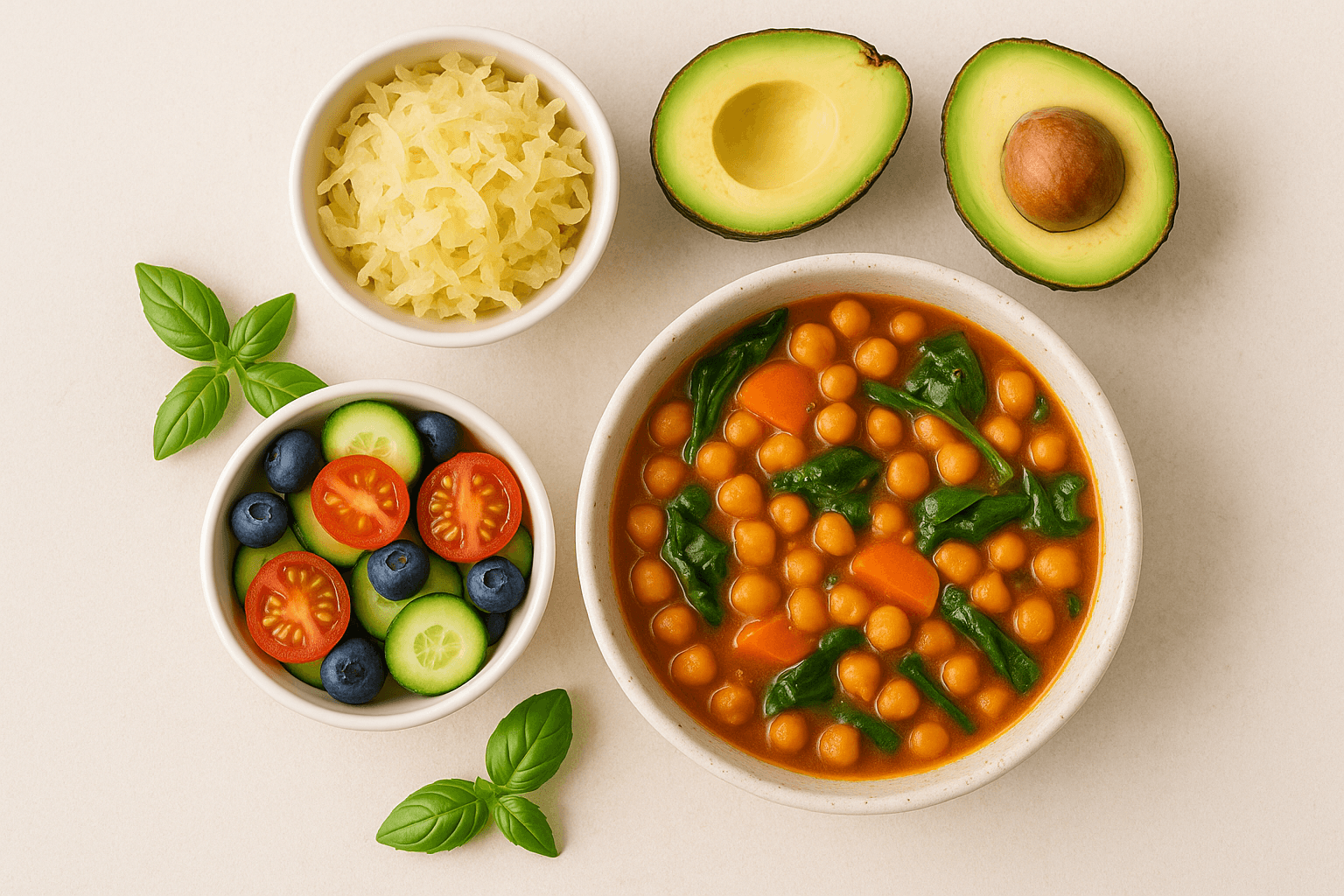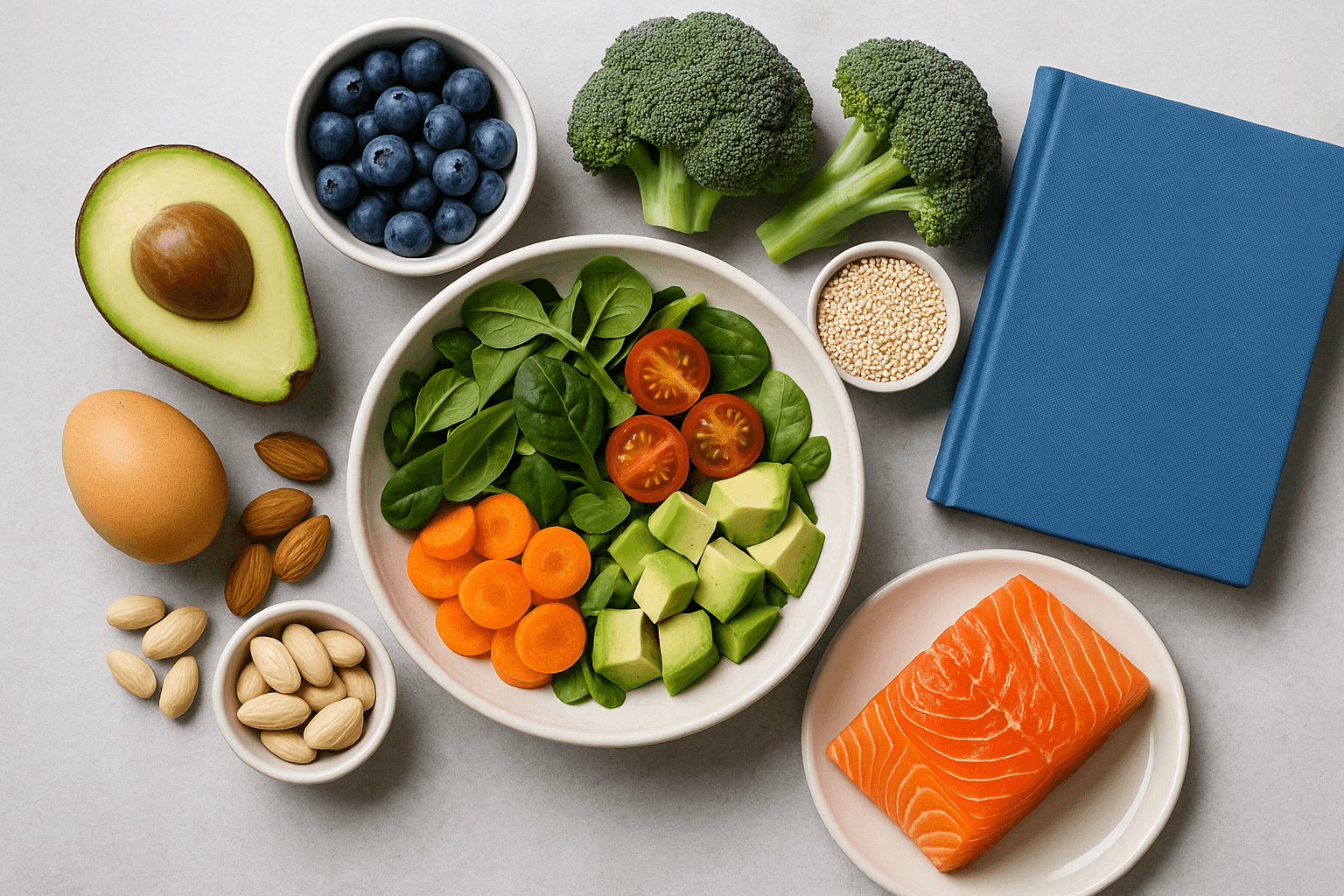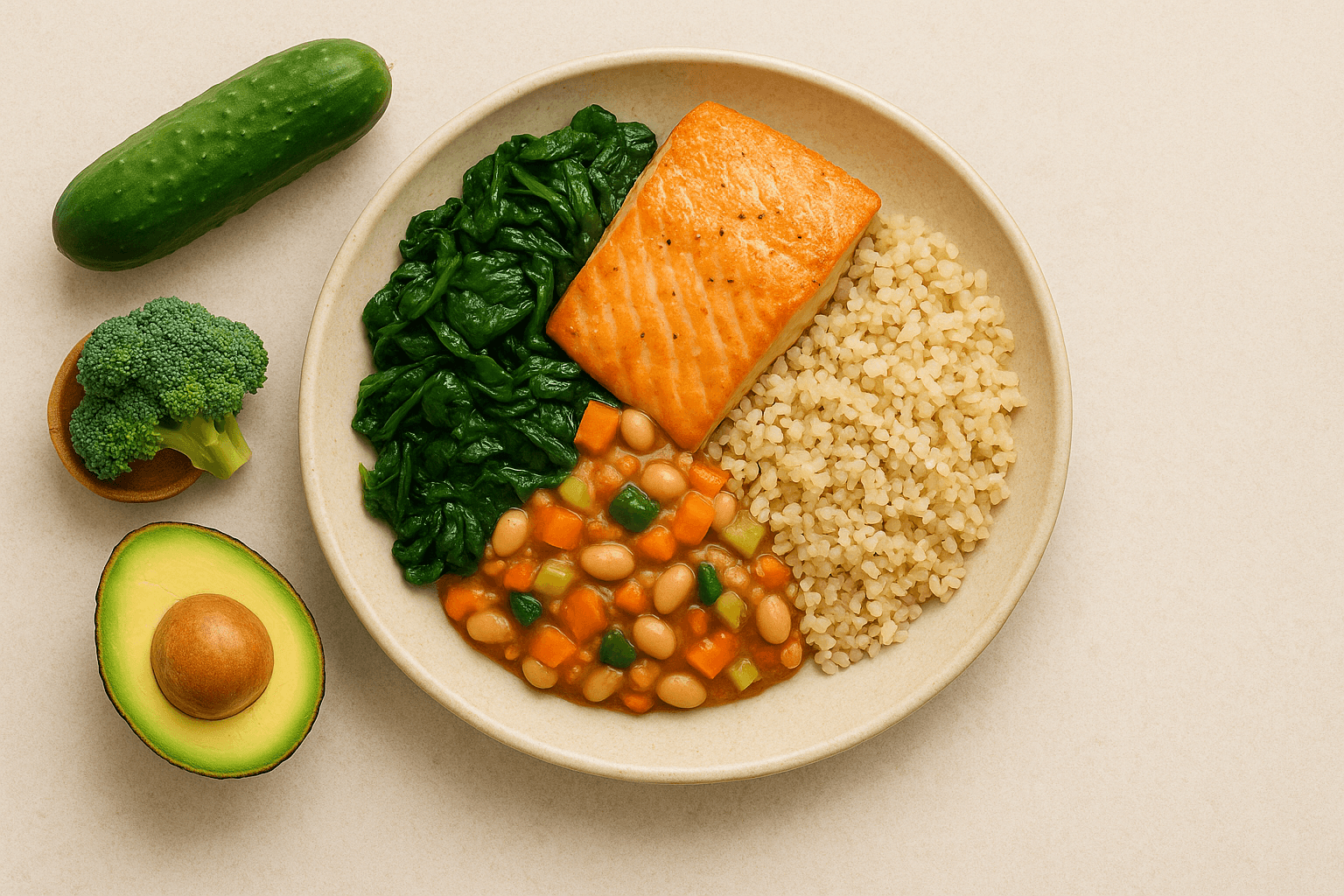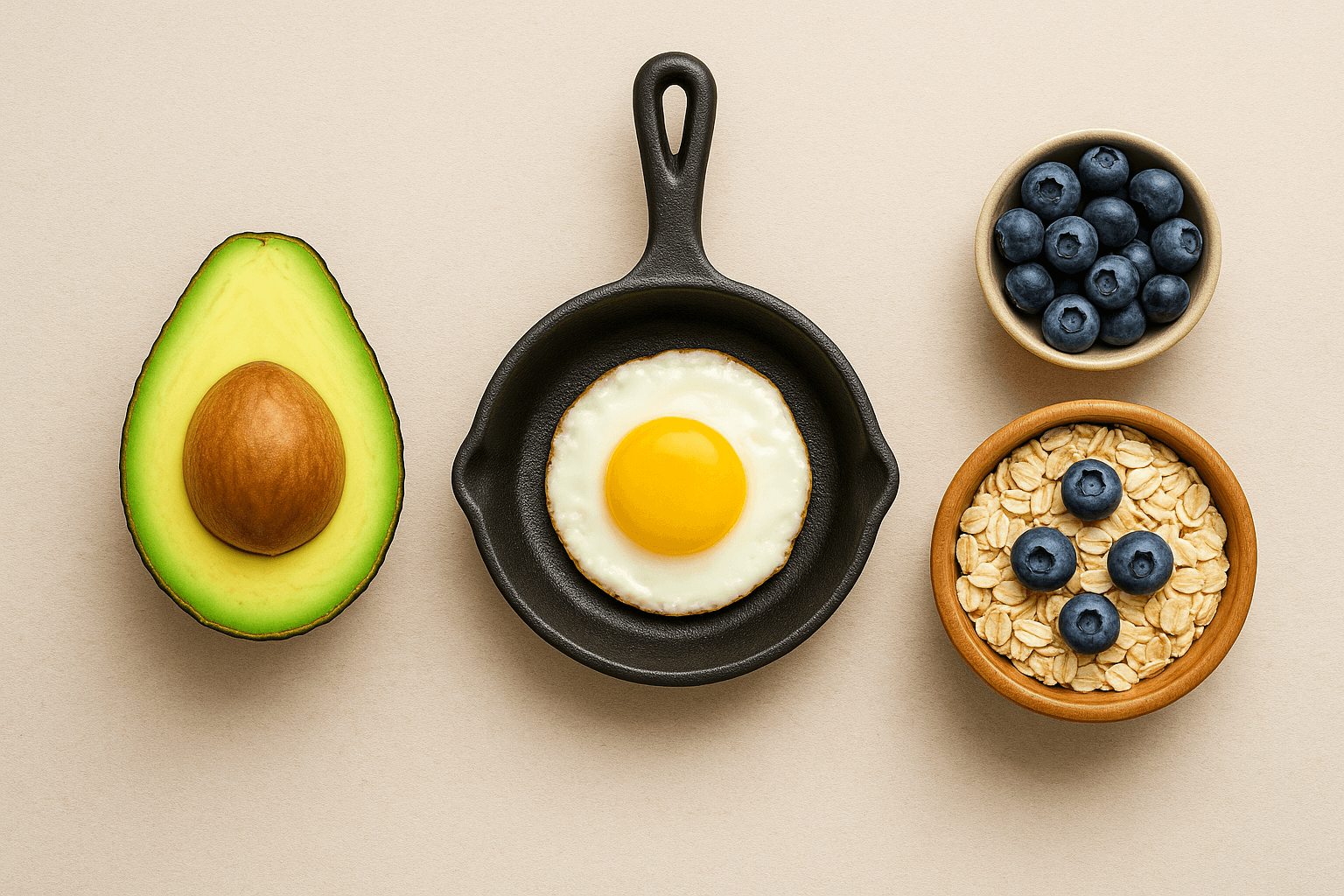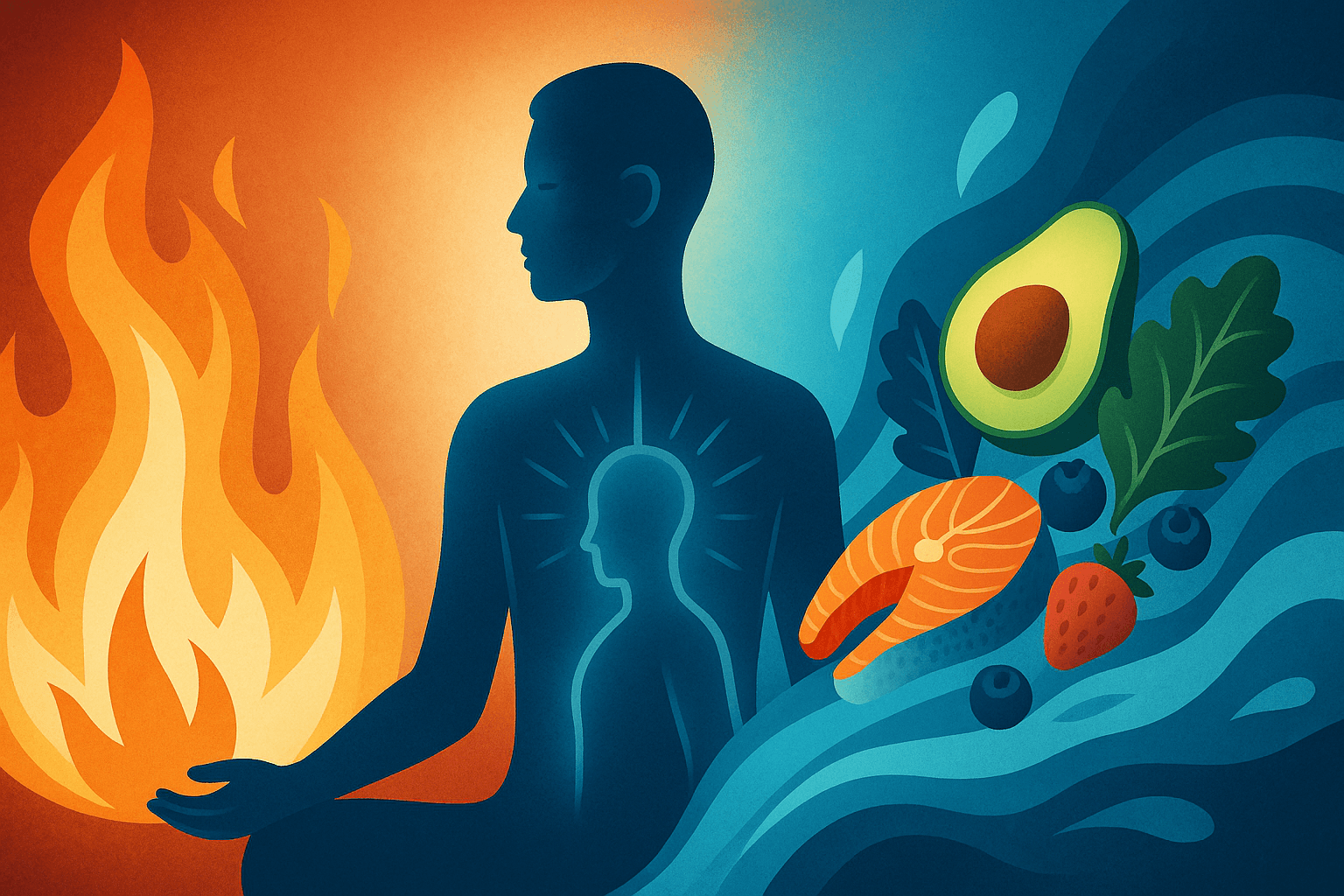HEALTHY EATING: BUILDING A NOURISHING LIFESTYLE THAT LASTS
Published on August 11, 2025
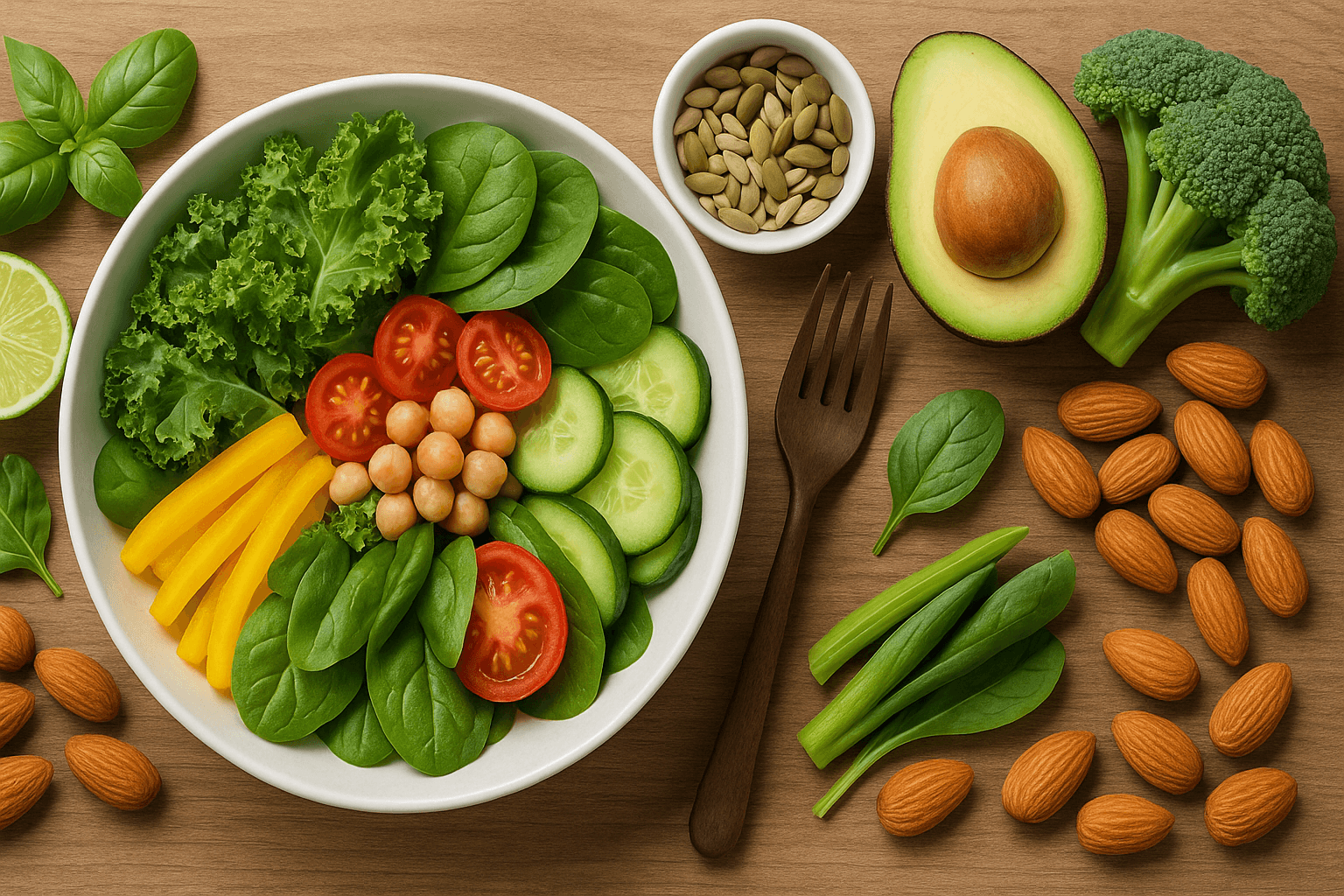
Good eating is one of the most important investments in yourself, and at the same time, it is a very distorted concept nowadays. A lot of people think restrictive diet, no flavour food, long list of bad foods. They imagine themselves waving goodbye to bread, dessert or their go-to comfort dishes for eternity. What really is healthy eating though is NOT about punishing and depriving yourself – it's actually about creating a simple, balanced system of nourshing your body in a way that allows you to go through life feeling energized, satiated, AND also how to support the rest of what goes on in our lives. We have to normalize being sustainable point blank period; ditching this idea of chasing perfection for a few weeks and then “falling off the wagon”, over, and over again — in favor long-term habits you can partake in for decades.
When you decide to eat healthily regularly, its way deeper than just following a “weight-watching” regime or “calorie cutting” habit. By doing that, you are giving your body the ingredients it needs to work at full capacity in all those parts of your day. Yes, the food you eat makes all the difference in your mood, energy levels and ability to focus but also affects your performance, physical properties as well as how deep you sleep (yes it does!). Eating a healthy diet will help you to prevent chronic diseases such as type 2 diabetes and heart disease, ensure your immune system stays fighting fit, aid hormone regulation, give you energy for exercise and speed up recovery after training. The secret of good health dos not lie in a "quick-fix", it lies in the foundation for a lifetime of well-being.
Healthy eating is so great because it is customizable to every single life style, nationality, and your own personal likings. There is no one perfect way to eat. Other people do really well on a Mediterranean diet based primarily in olive oil, vegetables, legumes, fish. Some love to eat plant-based eating which is full of grains, beans, fruits and vegetables. Others sit the line somewhere and balancing lean meats with plant proteins; others have the other extreme of hardly any meat at all, and focus heavily on local, seasonal veg. Eating well is about eating the highest-quality foods you can find and afford, being mindful of how those cooking methods may affect digestion or inflammation within your body and leaving room for pleasure and culture in all of it.
Healthy Eating for Once and Person with All
Healthy eating should be simple. Eat whole, minimally processed foods most of the time and consume them in sensible amounts that provide your body with the nutrients it needs. It should have carbohydrates for energy, protein to aid muscle and tissue repair, healthy fats for brain hormone function and then a wide range of vitamins minerals antioxidants etc. to provide essential building blocks for optimal cellular health. This does not mean you will never have a piece of cake, an order of fries or your favorite pizzeria basically it is letting those foods be the anchor food, balanced by nutrient dense meals.
A well-planned eating pattern should have enough calories to cover your body's energy needs, not too excessive that can lead to added weight or either deficits that will make you feel sluggish. It should consist of a variety of different vegetables and fruits, as each color and texture has its own unique nutrient profile. Whole grains will help to further both digestion and blood sugar as well, chemically. Choosing protein sources that will make us feel full, prevent muscle tissue loss, and maintain hunger levels in check. Gas, which is unquestionably necessary as it benefits heart health, brain function and nutrient absorption, but has been unfairly vilified by far too many people. Lastly, it needs to restrict foods with added sugar, high in sodium and saturated/ trans-fat- not remove but minimize and make them treats so that they are once in a while foods.
Building A Healthy Plate
Vegetables and Fruits – This should take up half your plate at most meals. The trick is variety, deep green leafy vegetables like spinach and kale, bright orange carrots and sweet potatoes, lively red tomatoes and bell peppers, luxurious purple berries and eggplant colour our world with unique antioxidants (a type of molecule that helps to battle oxidation, meaning that they help your body counteract free radicals which can lead to cell damage by reducing the gain/loss ratio), vitamins/minerals. Many people like to say “eat the rainbow”, which is a fun catch phrase but also incredibly meaningful as it represents a comprehensive way to ensure you are getting all of the colours and their nutrients which contribute to everything from vision health, heart function and immune system support.
Whole Grains: Substitute refined grains with whole grain options such as brown rice, quinoa, bulgur, barley and whole wheat bread or pasta. The bran and germ gives whole grains a high fiber content and increased levels of B vitamins, and minerals many of which may not be present in enriched or fortified refined grains. The fiber in whole grains not only helps with digestion and fosters a balanced gut microbiome, it also helps regulate blood sugar and keeps you fuller for longer so that you end up snacking from boredom less.
Protein – Protein is responsible for repairing and growing tissues, making them into a number of enzymes and hormones as well as the skin function of our immune system. Lean meats, poultry, fish, eggs, dairy, beans and lentils, tofu and tempeh are all good sources. Try to add one component of protein in your each meal it will assist you to sustain the balance energy and also help in muscle health.
Healthy Fats — Healthy fats are essential for the absorption of fat-soluble vitamins (A, D, E and K), as well as for processing hormones and inflammation in your body. They are found in avocado, olive oil, nuts seeds and fatty fish e.g. salmon and sardines. This can be an incredible difference in your heart health compared to the trans fats and more heavily processed oils.
Smart Approaches to Healthy Eating
Mindful Eating: In our hurried lives, often we eat quickly and mindlessly which results in overeating… as well low satiety. Mindful eating is the practice of slowing down, taking your time to eat, savoring each and every bite, and reconnecting with those hunger and fullness cues. This is true for digestion purposes, but also makes eating a more enjoyable and mindful experience.
Think ahead: One of the best ways to stay on track is to pre-plan healthy meals and snacks. That may involve batch cooking on weekends, prepping vegetables in advance or making sure you always have canned beans, whole grains and frozen vegetables on hand. Busy meal planning eliminates those “food emergencies,” where you rush to grab a bite but it only exists in the form of junk food.
Balanced nutrition Do not remove, diets that iron out a whole food group are quite simple to follow through unless you are allergic or intolerant. Stop depriving, just switch some choices out to reduce calorie intake. Substitute sugary drinks with sparkling water that is lemon or mixed berries flavored, exchange refined beverages for nuts and fruit, try utilizing more herbs and seasonings to flavor food items instead of surplus salt.
Stay Hydrated: Water is essential to nearly every process in your body, regulating temperature and carrying away waste. Mild dehydration of (even as little as 1 percent for Charis Hubberstey) could be too much, leading to fatigue, headaches and low concentration. Your skin needs water to stay smooth and free from blemishes — keep a bottle handy, and make sure you drink it slowly enough so that you sip on water consistently throughout the day (take activity level into consideration along with your climate).
A Classic Saying That Never Loses Its Power: Your Body Will Tell YouListen to your body! Real hunger vs. boredom/emotion eating is a huge revelation once you learn how to differentiate the two. Similarly, as you become careful about which foods make you feel energized vs. which ones slow you down, your selection will shift—you are likely to be drawn towards something that nourishes and sustains rather than the instant high of a food fondness.
Healthy Eating in Real Life
Make healthy choices automatic by loading your kitchen with nutrient-rich staples. If your cabinets are brimming with whole grains (like those found in cereals) and your fridge is stocked with fresh produce and your freezer is packed with pre-portioned proteins, you're more likely to make a full dinner every evening than if all you had were chips, cookies, and instant ramen.
At work: Unpaid overtime might have you craving fast food. By preparing your lunch and snacks before you leave the house in the morning, you should be left with no excuse but to eat healthily when hunger strikes. Consider having yogurt cups, fresh fruit and mixed nuts or pre-made salads to make those busy days a lot healthier.
Eating Fast Food: Restraunt Portions are usuallly big enough for several people and theyre also full of Salt, Sugar, and Fat. By scanning the menu in advance, you can be more discerning and select grilled proteins over fried ones, choose vegetable-based dishes, or request dressing on the side.
Eating Right While Traveling If you do eat, consider eating before you leave and packing portable snacks like trail mix, fruit, or protein bars to avoid being forced into only stopping at convenience stores or fast food. When dining out, strive for balance over the day instead of perfection every meal.
Breaking Free from All-or-Nothing Thinking
But, the most frequent obstacles to healthy eating people are up against is that they have to do it perfectly and “right” for it work. And the end result is we have these ups and downs where we completely reign in out of control- pulling ourselves off the rails for what can seem like months, only to burn every thing down once again. True healthy eating is flexible. Having a slice of cake at the party will not ruin next week. Just go back to the balanced meals you typically eat. Consistency over perfection breeds progress.
PROsCulture and Enjoyment
Food is linked to our genes and familial history. We should see a healthy diet as one that honours this relationship, not deny it. That means adjusting some recipes to healthier versions when you can—bake or grill instead of frying, switch out white flour for whole grains, reduce the sugar in things like sweet potato casserole— while also giving yourself permission to let some things remain unchanged, no matter how sugary and laden with carbs they may be.
Sample Day of Healthy Eating
Meal 1: Veggie omelet with spinach, tomatoes, mushrooms, and onions + whole grain toast and some avocado That combo will give you some protein, fiber and good fats to get your day started off right.
Snack: Apple with nuts (pre-portioned — grab 1 handful and go)
Lunch: Salad of grilled chicken and mixed greens with cucumbers, cherry tomatoes, quinoa, olive oil vinaigrette. Protein, complex carbs and veg will help you cruise through the afternoon with steady energy.
Snack: 1 cup Greek yogurt with some blueberries and the seeds of a chia plant (fiber, omega-3)
Supper: Baked salmon with lemongrass & dill, roasted baby reds and steamed broccoli. These burgers are balanced, moreish and nutritious.
Night: A cup of herbal tea with a piece or two rectangle shapes of super dark chocolate (80% cacao content) to give into the sweet craving in moderation.
Sustaining Healthy Eating for Life
It is important to engage in small changes and start slow. Change soda for water a few times a week, increase your vegetables at dinner by one serving, try a whole grain you've never had before and replace those processed snacks with some fresh fruit or nuts. Eventually they add enough of the chemical shifts and so some small behavioral changes, that it leads to a life overhaul. Have people around you that help your goals, keep easy healthy foods in your kitchen, and always know that life happens.
At the end of the day, eating healthy is not about adhering to some holy perfect diet — its about developing a concept of food that fuels YOU: your body, you mind, and your soul. When you connect with food as both nourishment, enjoyment and bonding all together — this is unlocking the path to a lifetime of health. It is the decision you make every single day and it is one of the absolute most empowering decisions to ever commit to.



